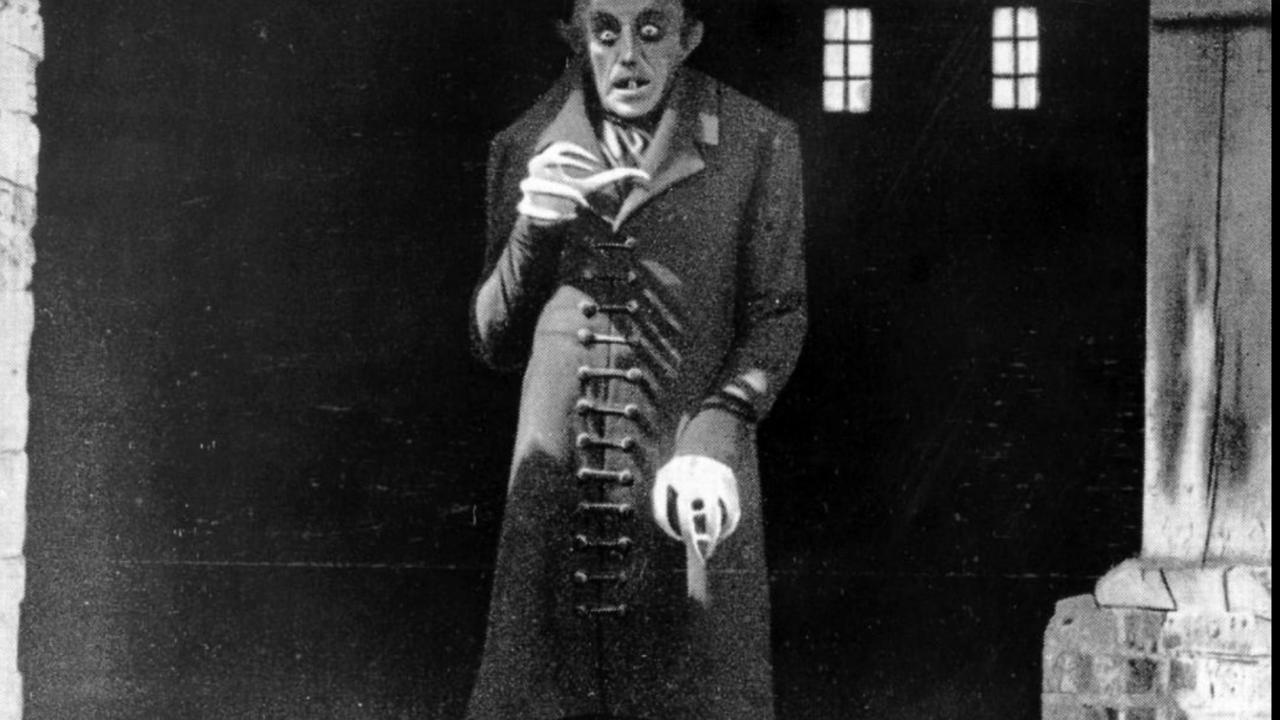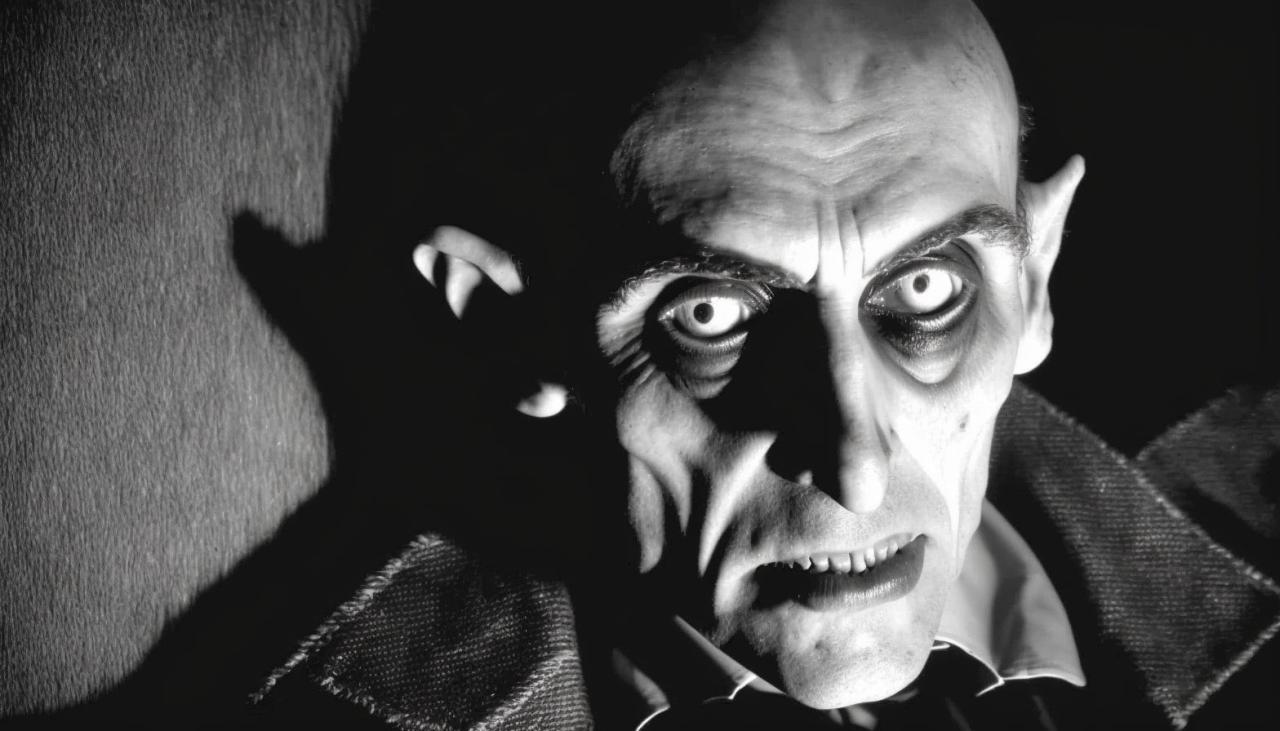Nosferatu 1922, a seminal work of German Expressionist cinema, captivates audiences with its haunting visuals, chilling atmosphere, and timeless themes.
This silent film, directed by F.W. Murnau, is a mesmerizing adaptation of Bram Stoker’s Dracula, offering a unique and unforgettable cinematic experience.
Historical Context
The year 1922 marked a significant turning point in the history of cinema. It witnessed the release of several groundbreaking films that pushed the boundaries of filmmaking and left a lasting impact on the medium. Among these cinematic milestones was F.W.
Murnau’s masterpiece, Nosferatu, a haunting and visually stunning adaptation of Bram Stoker’s classic novel, Dracula.
German Expressionism
Nosferatu emerged from the vibrant artistic movement known as German Expressionism. This movement, which flourished in the early 20th century, emphasized subjective emotions and inner experiences, often using distorted and exaggerated forms to convey psychological states. Murnau’s film is a prime example of German Expressionist cinema, employing striking visuals, eerie lighting, and symbolic imagery to create an unforgettable cinematic experience.
Production and Release
The production of Nosferatu was a challenging endeavor. Murnau faced numerous obstacles, including financial constraints and legal issues related to the unauthorized use of Stoker’s novel. Despite these challenges, the film was completed in 1922 and released to critical acclaim.
However, due to copyright infringement, most copies of the film were ordered to be destroyed, making it a rare and highly sought-after cinematic treasure.
Plot and Characters: Nosferatu 1922
Nosferatu is a silent horror film that tells the story of Count Orlok, a vampire who travels from Transylvania to Germany to terrorize a small town.
The film begins with Thomas Hutter, a young real estate agent, who is sent to Transylvania to close a deal with Count Orlok. Hutter soon discovers that Orlok is a vampire and that he has sinister plans for the town.
Count Orlok
Count Orlok is the main antagonist of Nosferatu. He is a vampire who is centuries old and has a thirst for blood. Orlok is a ruthless and cruel creature who will stop at nothing to get what he wants.
Hutter and Ellen
Thomas Hutter is the protagonist of Nosferatu. He is a young real estate agent who is sent to Transylvania to close a deal with Count Orlok. Hutter soon discovers that Orlok is a vampire and that he has sinister plans for the town.
Ellen is Hutter’s wife. She is a kind and loving woman who is unaware of her husband’s danger. Ellen is the one who ultimately saves the town from Orlok.
Visual Style
Nosferatu is renowned for its innovative cinematography and lighting techniques that contribute to its eerie and unsettling atmosphere. Director F.W. Murnau masterfully employed shadows and silhouettes to create a sense of dread and suspense.
Camera Techniques
- Subjective Camera:Murnau used the subjective camera to place viewers in the perspective of the characters, heightening the sense of immediacy and fear.
- Dutch Angles:Tilting the camera off-axis created a disorienting and unsettling effect, reflecting the protagonist’s growing paranoia and unease.
- Double Exposure:Superimposing images created a surreal and otherworldly atmosphere, blurring the lines between reality and nightmare.
Lighting and Shadows
Murnau’s use of lighting and shadows was instrumental in creating the film’s eerie atmosphere. Shadows danced ominously, casting grotesque figures that heightened the sense of dread. Light was often used sparingly, with flickering flames and moonlight providing an ethereal glow that added to the film’s supernatural feel.
Influence on Subsequent Horror Films
Nosferatu’s visual style had a profound influence on subsequent horror films. Its use of shadows, silhouettes, and subjective camera techniques became staples of the genre. Murnau’s innovative approach to cinematography helped establish the visual language of horror cinema and continues to inspire filmmakers to this day.
Themes and Symbolism
Nosferatu delves into profound themes that transcend its horror genre, exploring the human condition and societal anxieties of the early 20th century.
Love and Death
The film juxtaposes the power of love with the inevitability of death. Count Orlok’s sinister presence brings both desire and destruction, symbolizing the dual nature of human longing.
The Supernatural and the Unknown
Nosferatu embodies the fear of the unknown and the allure of the supernatural. The vampire’s otherworldly presence and mysterious origins unsettle the characters and audience alike.
Social Commentary
The film reflects the social and political turmoil of its time. The plague, a symbol of social decay and societal unrest, mirrors the anxieties surrounding disease and economic hardship in post-World War I Germany.
Legacy and Impact
Nosferatu was a critical and commercial success upon its release, and it has since become one of the most influential horror films of all time. The film’s unique visual style, atmospheric score, and chilling performance by Max Schreck as Count Orlok have made it a classic of the silent film era.
Nosferatu has had a profound influence on later horror films, and its imagery and characters have been referenced and parodied in countless works of popular culture. The film’s depiction of vampires as undead creatures with supernatural powers has become a staple of the horror genre, and its iconic opening scene, in which Count Orlok’s shadow approaches a sleeping woman, is one of the most recognizable images in cinema history.
Critical Reception
Upon its release, Nosferatu was praised by critics for its innovative visual style and atmospheric score. However, the film was also criticized for its unauthorized adaptation of Bram Stoker’s novel Dracula, and Stoker’s widow sued to have the film destroyed.
Despite the legal challenges, Nosferatu has survived and become one of the most celebrated films of the silent era.
Commercial Success
Nosferatu was a commercial success, grossing over $1 million at the box office. The film’s success helped to establish the horror genre as a viable commercial enterprise, and it paved the way for the production of other classic horror films such as The Cabinet of Dr.
Caligari (1920) and The Phantom of the Opera (1925).
Influence on Later Horror Films, Nosferatu 1922
Nosferatu has had a profound influence on later horror films, and its imagery and characters have been referenced and parodied in countless works of popular culture. The film’s depiction of vampires as undead creatures with supernatural powers has become a staple of the horror genre, and its iconic opening scene, in which Count Orlok’s shadow approaches a sleeping woman, is one of the most recognizable images in cinema history.
Conclusive Thoughts
Nosferatu 1922 remains a testament to the power of cinema to evoke fear, wonder, and reflection. Its enduring legacy has cemented its place as a masterpiece of horror and a cultural touchstone.
FAQ Corner
What is the significance of Nosferatu 1922 in the history of cinema?
Nosferatu 1922 is widely regarded as a masterpiece of German Expressionist cinema, known for its innovative visuals, haunting atmosphere, and enduring influence on horror films.
Who directed Nosferatu 1922?
Nosferatu 1922 was directed by F.W. Murnau, a pioneering German filmmaker known for his Expressionist style.
What is the main plot of Nosferatu 1922?
Nosferatu 1922 follows the story of Thomas Hutter, a young real estate agent who travels to Transylvania to meet Count Orlok, a mysterious vampire who plans to move to Hutter’s hometown.



